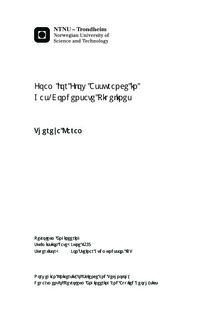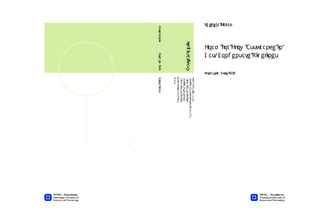| dc.contributor.advisor | Gudmundsson, Jon Steinar | nb_NO |
| dc.contributor.author | Karam, Thereza | nb_NO |
| dc.date.accessioned | 2014-12-19T12:17:29Z | |
| dc.date.available | 2014-12-19T12:17:29Z | |
| dc.date.created | 2013-09-16 | nb_NO |
| dc.date.issued | 2013 | nb_NO |
| dc.identifier | 648722 | nb_NO |
| dc.identifier | ntnudaim:9483 | nb_NO |
| dc.identifier.uri | http://hdl.handle.net/11250/240129 | |
| dc.description.abstract | Use of foam in the oil industry is employed for lifting cuttings in drilling operations, for removal of liquid loading in vertical wells and for increasing oil recovery. Limited researches discussed the foam applicability as a flow assurance practice. This study is an initial attempt to investigate the possibility of using foam to remove or reduce liquid accumulations in horizontal gas-condensate pipelines. The different rheological models of foam had been examined along with the corresponding correlations. Foam was treated as either a Bingham plastic or a Power law flow. The slippage at the wall was also accounted for. Accordingly, the pressure drop, on which sensitivity analysis was applied, was calculated for three different foam qualities. A simplified laboratory experiment was carried out to compare model calculations to measurements. Practical aspects as the use of equipment and foaming agents were suggested. Based on the results, it can be concluded that foam induction in horizontal conduits leads to great pressure losses compared to multiphase flow. A comparison of the calculated models and the experiments suggested treating foam as a Power law fluid with the consideration of the wall slip layer. According to the practical aspects, foam is classified as an economical and eco-friendly procedure. Regardless of maintaining a continuous production, the uncertainty attributed to foam behavior recommends some further work to be carried out for a better understanding of its effects. | nb_NO |
| dc.language | eng | nb_NO |
| dc.publisher | Institutt for petroleumsteknologi og anvendt geofysikk | nb_NO |
| dc.title | Foam for Flow Assurance in Gas-Condensate Pipelines | nb_NO |
| dc.type | Master thesis | nb_NO |
| dc.source.pagenumber | 141 | nb_NO |
| dc.contributor.department | Norges teknisk-naturvitenskapelige universitet, Fakultet for ingeniørvitenskap og teknologi, Institutt for petroleumsteknologi og anvendt geofysikk | nb_NO |

